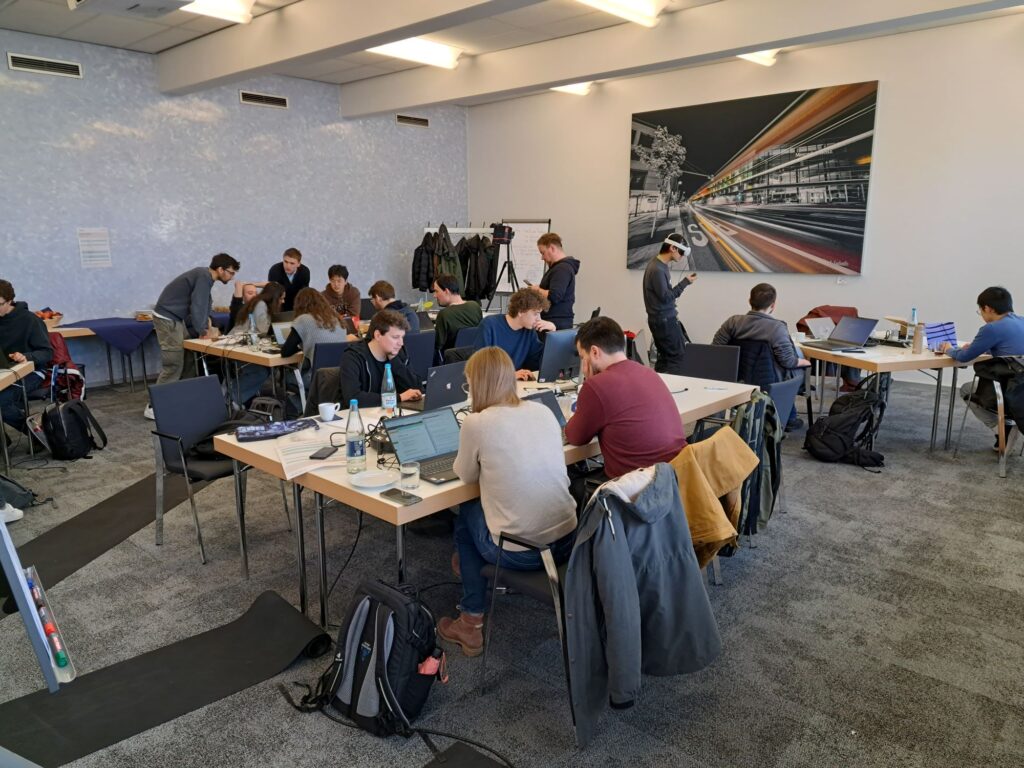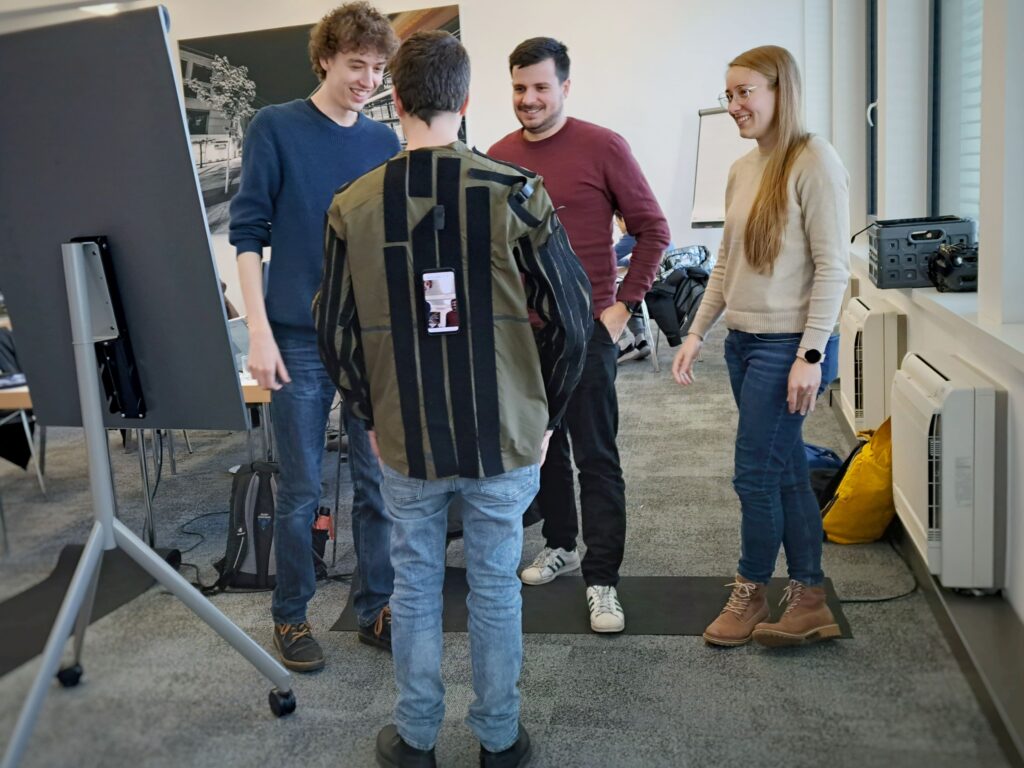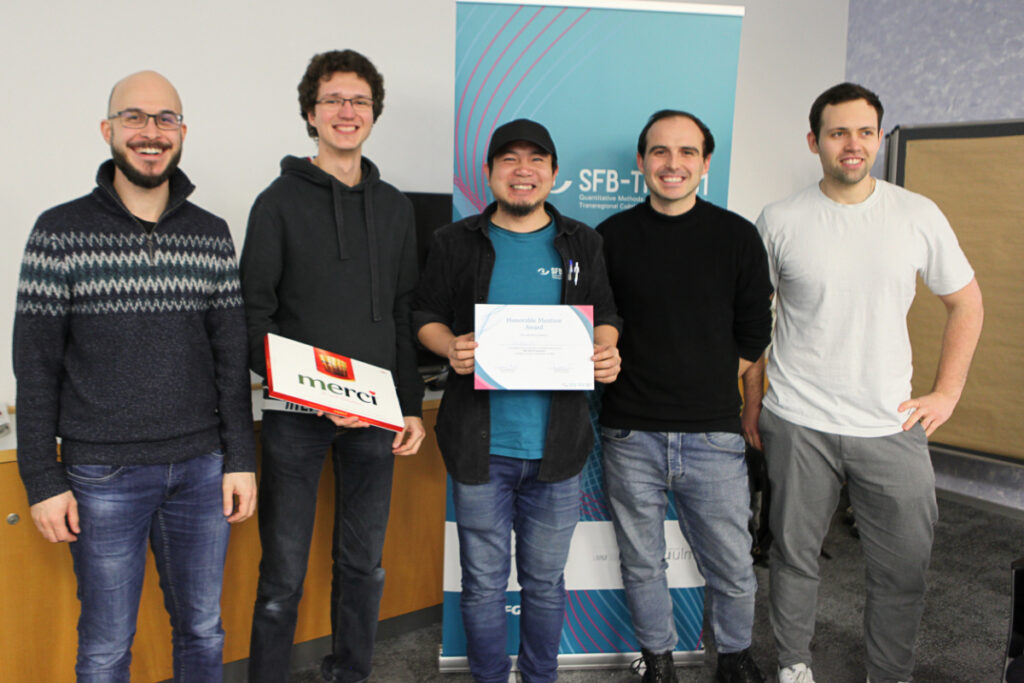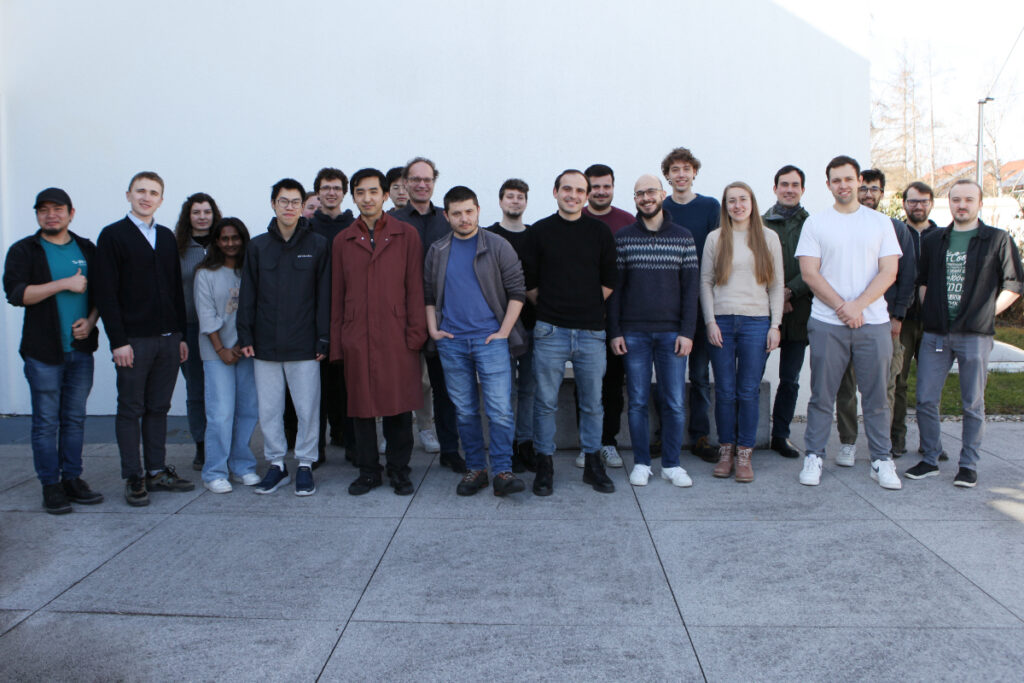On February 20 and 21, 2025, we held the second edition of our SFB-TRR research hackathon at VDI-Haus, Stuttgart. Last year, our first hackathon took place under the title “DR4ET”, which stands for dimension reduction for eye tracking. To broaden the scope, this time we went beyond eye tracking. As devices like mobile phones and wearable eye trackers become more powerful and widespread, it is now possible to collect multimodal data—such as visual, audio, and biometric information, as well as data from multiple users. Therefore, we named this year’s hackathon “Multimodal and Collaborative Data in HCI”.
Preparing the hackathon
As usual, we spent a lot of effort preparing a variety of hackathon proposals and ended up with four exciting topics:
- BodySplay – On-body Cross-device Interaction (Christian Krauter)
- Visualization and analysis of GPS, IMU, Video, and Gaze data of Paragliders (Patrick Paetzold)
- Enhancing Collaborative Work in Augmented Environments using Gaze Feedback Projection (Maurice Koch, Seyda Öney, and Kuno Kurzhals)
- Gaze-based Task Evaluation in Immersive Analytics (Yao Wang, Ying Zhang, and Karsten Klein)

Let’s hack: coding and developing prototypes
We attracted twenty-two participants for the hackathon, with three joining us from the University of Konstanz and one from LMU Munich (Thank you Sven Mayer!). After a warm welcome from co-organizer Quynh Quang Ngo on behalf of our speaker Daniel Weiskopf, we had about 36 hours to form ideas, write our code, and prepare a demo or prototype for the final presentation. Luckily, the coffee, cake, and meals at the VDI Haus are very delicious, keeping us energized during our hard work and making our hackathon a good experience.



Results & awards
Things got exciting when the four teams presented their work in front of all hackathon participants and a jury committee consisting of Andreas Bulling (A07), Marina Evers (A01), and Daniel Weiskopf (A01, B01, INF, MGK, Ö). In the end, four certificates were granted to the teams. “The Longest Code Award” went to Team 4, “The Out-of-the-box Award” to Team 1, “The Aesthetic Design Award” to Team 3, and “The Honorable Mention Award” to Team 2.

Benefits of organizing a research hackathon
As we already knew from last year’s experience, organizing a research hackathon is hard work. Still, we are convinced that we all benefitted from the event. For instance, the two-day hackathon was a great boost for collaboration within the SFB-TRR 161. For example, Team 1 consisted of researchers from Stuttgart and Munich, while Team 2 had researchers from both Stuttgart and Konstanz, including three different projects (A01, A03, A08).
Last but not least, the hackathon also directly contributes to a productive process of publishing papers. One paper from the hackathon has already been accepted by the ETVIS workshop in conjunction with ETRA 2025: “Group Gaze-Sharing with Projection Displays” by Team 3. Other teams are still busy working on their publications and we keep our fingers crossed for more accepted papers in the near future!

Participants of the Hackathon in Stuttgart. Image: Christina Warren

